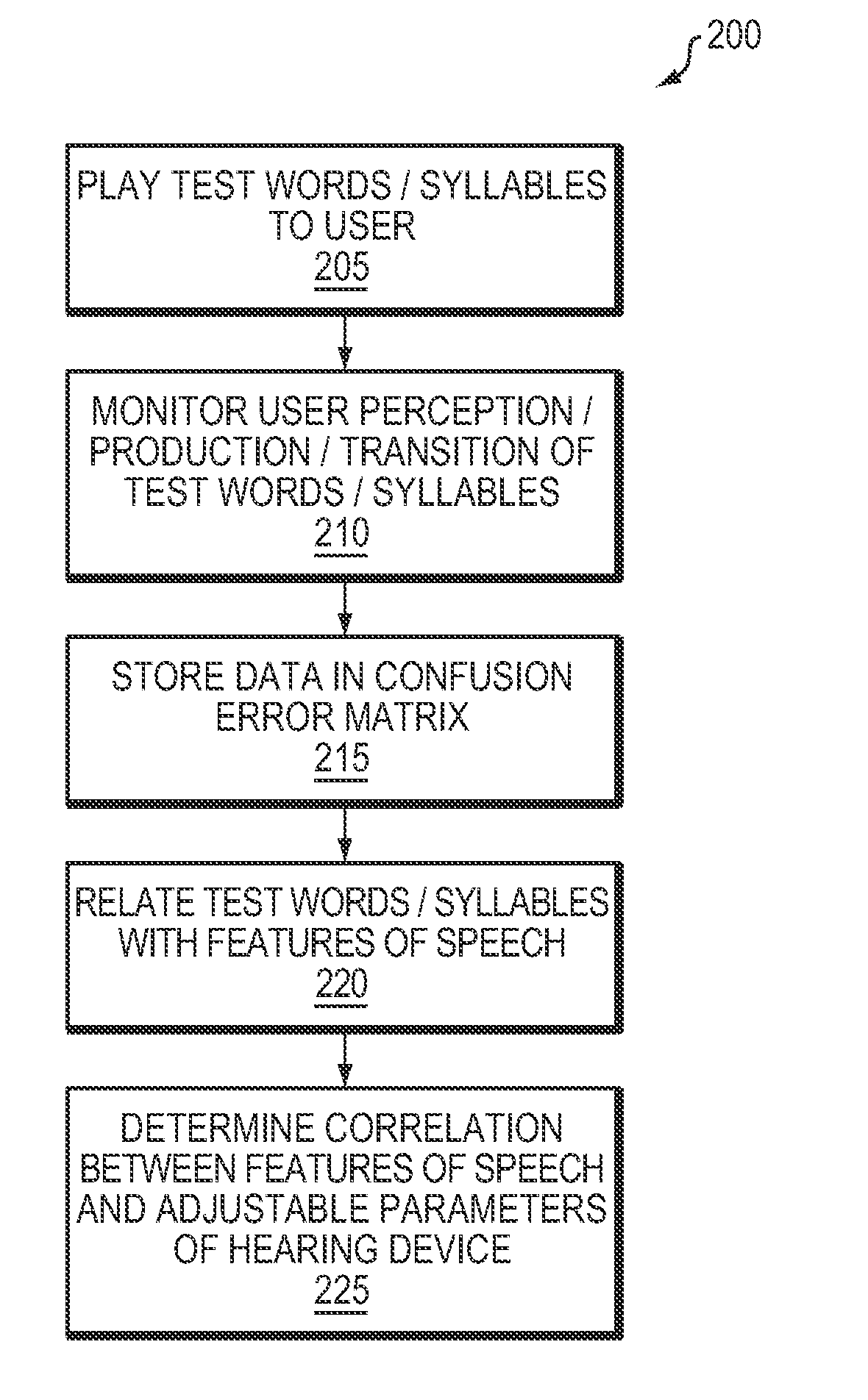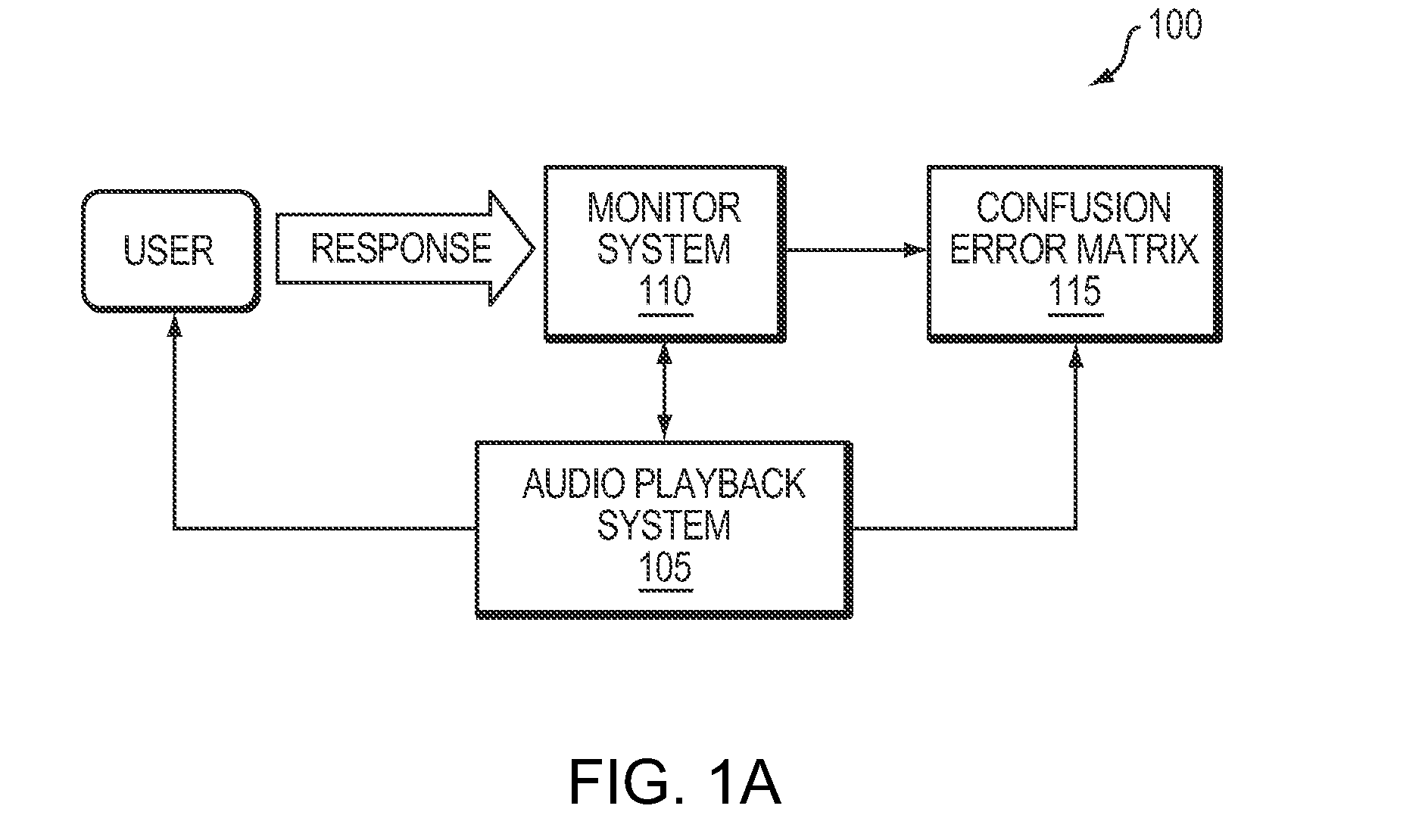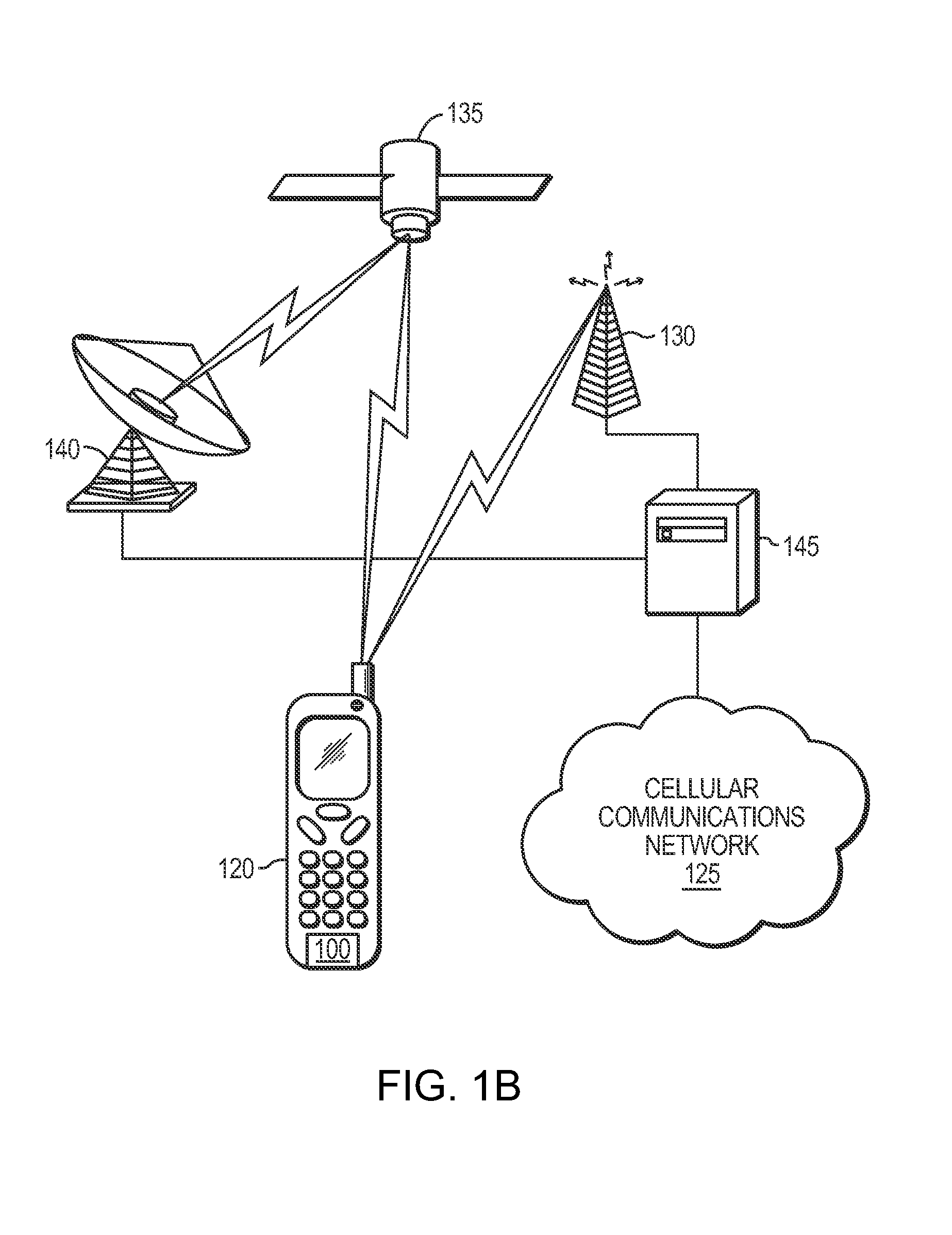Systems and Methods for Tuning Automatic Speech Recognition Systems
a speech recognition and automatic technology, applied in electrotherapy, instruments, therapy, etc., can solve the problems of time and number, daunting tasks, and the process of tuning is not user-specific,
- Summary
- Abstract
- Description
- Claims
- Application Information
AI Technical Summary
Benefits of technology
Problems solved by technology
Method used
Image
Examples
Embodiment Construction
[0039]FIG. 1A is a schematic diagram illustrating an exemplary system 100 for determining relationships between distinctive speech and / or language features and adjustable parameters of a hearing enhancement system (hearing device) in accordance with the inventive arrangements disclosed herein. As previously noted, such hearing devices can include any of a variety of digital hearing enhancement systems such as cochlear implant systems, digital hearing aids, or any other such device having digital processing and / or speech processing capabilities. Other hearing devices, in accordance with the invention, can include voice-based communication systems such as mobile phones configured to communicate via a cellular communications network and / or wireless ad hoc network, as well as telephones configured to communication via a Voice-over-Internet-Protocol (VoIP) network and / or adapted to communicate via a plain old telephone service (POTS) network.
[0040]More particularly, the system 100 can in...
PUM
 Login to View More
Login to View More Abstract
Description
Claims
Application Information
 Login to View More
Login to View More - R&D
- Intellectual Property
- Life Sciences
- Materials
- Tech Scout
- Unparalleled Data Quality
- Higher Quality Content
- 60% Fewer Hallucinations
Browse by: Latest US Patents, China's latest patents, Technical Efficacy Thesaurus, Application Domain, Technology Topic, Popular Technical Reports.
© 2025 PatSnap. All rights reserved.Legal|Privacy policy|Modern Slavery Act Transparency Statement|Sitemap|About US| Contact US: help@patsnap.com



